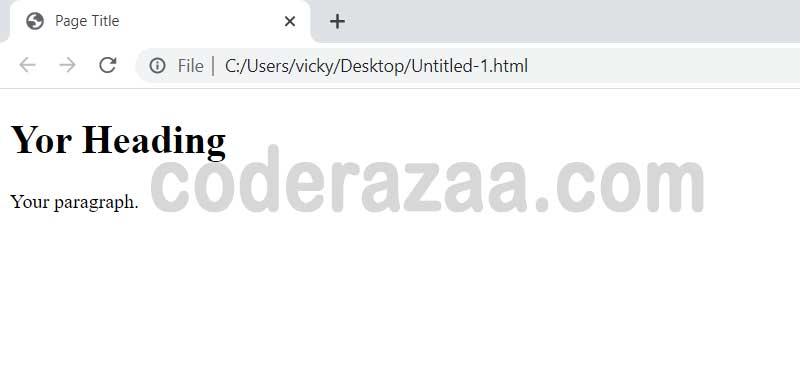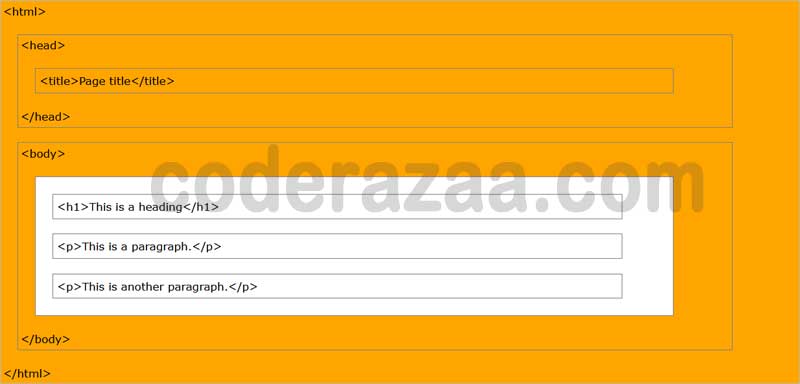HTML Introduction
HTML is the most common language used to mark up Web pages.
What does HTML mean?
Hyper Text Markup Language is what HTML stands for.
HTML is the most common language used to mark up Web pages.
HTML describes how a Web page is put together.
HTML is made up of a number of “elements.”
HTML elements tell the browser how to show the content. For example, “this is a heading,” “this is a paragraph,” “this is a link,” etc., are labels for HTML elements.
A Simple HTML Document
Example
<!DOCTYPE html>
<html>
<head>
<title>Page Title</title>
</head>
<body><h1>Your H1 Heading</h1>
<p>Your paragraph.</p></body>
</html>
Example Explained
This document is an HTML5 document, as stated by the!DOCTYPE html> declaration.
The first thing on an HTML page is the <html> element.
The meta-information about an HTML page is in the head> element.
The <title> element gives the HTML page a title, which shows up in the browser’s title bar or on the tab for the page.
The <body> element defines the body of the document and holds all the visible parts, like headings, paragraphs, images, links, tables, lists, etc.
The <h1> element is used to make a big heading.
The <p> element defines a paragraph
What does HTML Element mean?
A start tag, some text, and an end tag make up an HTML element:
<tagname> Content goes here… </tagname>
From the start tag to the end tag, everything is an HTML element:
<h1>Your Heading
</h1>
<p>
Your paragraph.
</p>
Browsers for the World Wide Web
A web browser (like Chrome, Edge, Firefox, or Safari) is meant to read HTML documents and show them in the right way.
The HTML tags are not shown by a browser, but they are used to figure out how to show the document:

Structure of an HTML Page
Here is a picture of how an HTML page is put together:

HTML History
Since the early days of the World Wide Web, there have been many versions of HTML:
| Year | Version |
|---|---|
| 1989 | Tim Berners-Lee invented www |
| 1991 | Tim Berners-Lee invented HTML |
| 1993 | Dave Raggett drafted HTML+ |
| 1995 | HTML Working Group defined HTML 2.0 |
| 1997 | W3C Recommendation: HTML 3.2 |
| 1999 | W3C Recommendation: HTML 4.01 |
| 2000 | W3C Recommendation: XHTML 1.0 |
| 2008 | WHATWG HTML5 First Public Draft |
| 2012 | WHATWG HTML5 Living Standard |
| 2014 | W3C Recommendation: HTML5 |
| 2016 | W3C Candidate Recommendation: HTML 5.1 |
| 2017 | W3C Recommendation: HTML5.1 2nd Edition |
| 2017 | W3C Recommendation: HTML5.2 |
